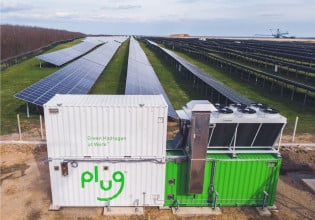D&H Global Enterprise, LLC. announced a new electric power propulsion system that the company claims delivers higher performing and more reliable Hybrid Electric Vehicles (HEV) with reduced complexity, resulting in lower manufacturing and ownership costs.
According to the company, the current HEV power propulsion systems on the market utilize many complex and costly electronic circuits for monitoring sensors and control platforms, and are efficient only at relatively low speeds. There is a need for HEV performance equivalent to regular gasoline vehicles, but with better mileage. In response, D&H announced three patent-pending products, the PMRM,™ the PMVCU, and the Power Electronic Unit.
The PMRM™ is a new technology in electric motor/generators that is neither an induction motor or any current motor type in the market. It operates at a very high efficiency, with a wide constant torque to speed ratio, develops a high torque to weight ratio, and generates clean electricity with low space harmonics. The company claims that an additional benefit is that it does not require complicated control circuits to function.
"We are very excited about bringing this technology to the public. Large SUV type HEV’s using this system, will consume, for example, 40+ MPG on the highway and 50+ MPG in the city, with the same power and torque performance as similar sized gasoline vehicles. A small sedan sized vehicle can achieve over 100MPG," said Senior Company Member, Debbie Hamedi. Hassan Hamedi, another Senior Member, added "The PMRM™ can revolutionize the HEV industry."
A smart control platform (PMVCU) has been developed by D&H to monitor and improve the performance of the HEV. Fuzzy Logic based algorithms are used to control the power management between the ICE and the EGS in the HEV. The company’s, PMVCU operates at optimum performance and achieves smooth operation of both ICE and EGS, which reflects in the increase in the lifetime of the vehicle.
The Power Electronic Unit generates very low time harmonics, with a low switching frequency, resulting in a flat efficiency above 90% for the whole load range. D&H claims that the three products used together in HEVs reduce gasoline usage, maintenance required, and the overall initial cost of the manufactured vehicle. The result is claimed to be a more affordable, capable, and robust HEV that reduces greenhouse gas emissions even further.






